There’s a certain magic to watching your garden flourish, and the secret ingredient often lies hidden beneath the surface—quite literally. Mulch, the unsung hero of the gardening world, holds the power to transform your garden into a thriving oasis, whether you’re nurturing your first seedlings or curating a botanical masterpiece. Understanding when to use mulch effectively can be the difference between a garden that merely survives and one that truly thrives.
For those just beginning their gardening journey, the concept of mulch might seem like a simple afterthought. However, seasoned gardeners know that timing and technique are crucial in harnessing mulch’s full potential. By learning when and how to apply mulch, you’ll discover its ability to conserve moisture, suppress weeds, and regulate soil temperature, making your gardening efforts more fruitful and enjoyable.
In this article, we’ll delve into the best times and methods for mulching, tailored to fit the unique needs of your plants and climate. You’ll gain insights into seasonal strategies, the ideal types of mulch for your garden, and common pitfalls to avoid. Whether you’re looking to simplify your garden maintenance or maximize your yield, these practical tips will empower you to make informed decisions, ensuring that your gardening experience is as rewarding as it is beautiful.
Understanding Mulch Benefits
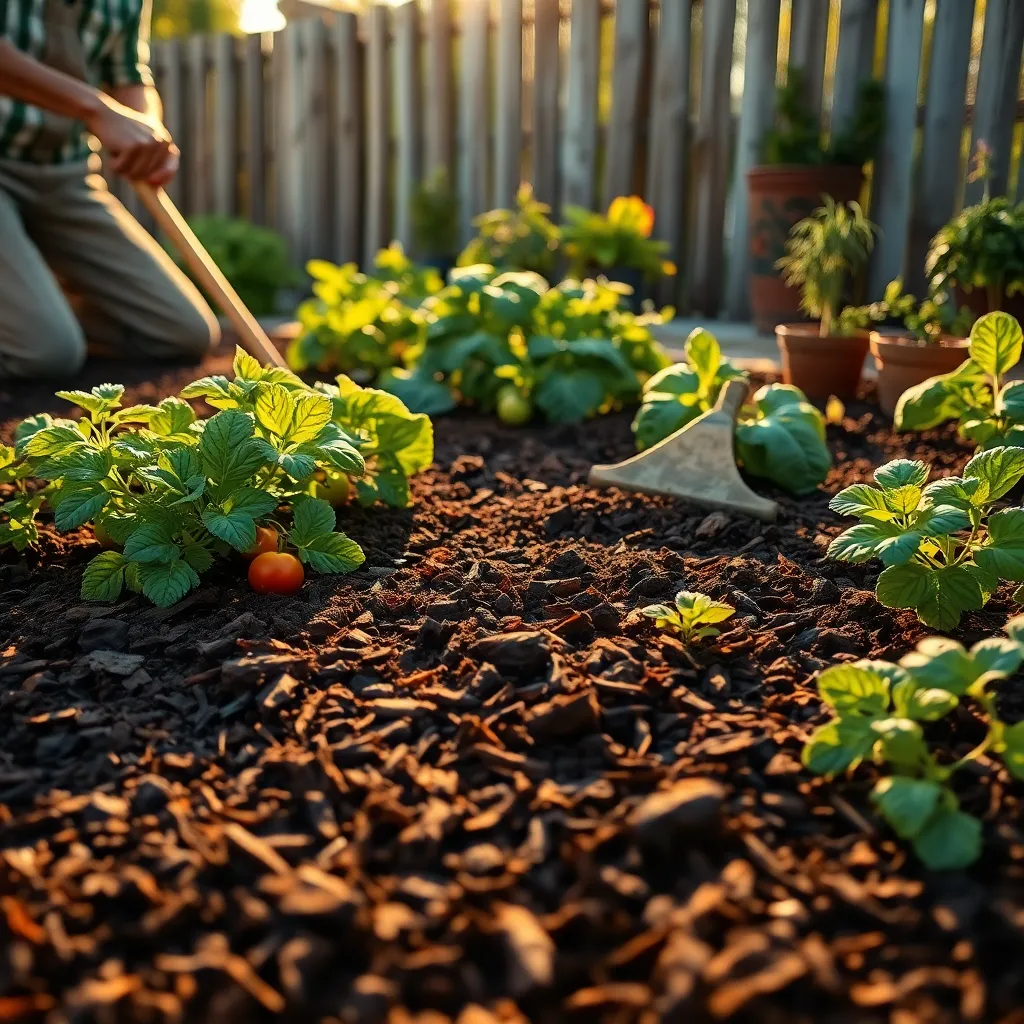
Mulch is a gardener’s best friend, offering a range of benefits that can enhance plant health and soil quality. It helps to retain moisture in the soil, reducing the need for frequent watering and keeping plants hydrated during dry spells.
Applying mulch can also effectively suppress weed growth, minimizing competition for nutrients and space in your garden. This is particularly beneficial for beginners who might find weeding a time-consuming task.
For more advanced gardeners, mulch can improve soil structure and fertility over time as it breaks down. Organic mulches like straw, wood chips, or shredded leaves gradually decompose, adding valuable nutrients back into the soil.
Additionally, mulch provides a protective barrier for roots during extreme temperature fluctuations. This is crucial in regions with harsh winters or hot summers, as it helps maintain a stable environment for your plants.
Seasonal Timing for Mulching
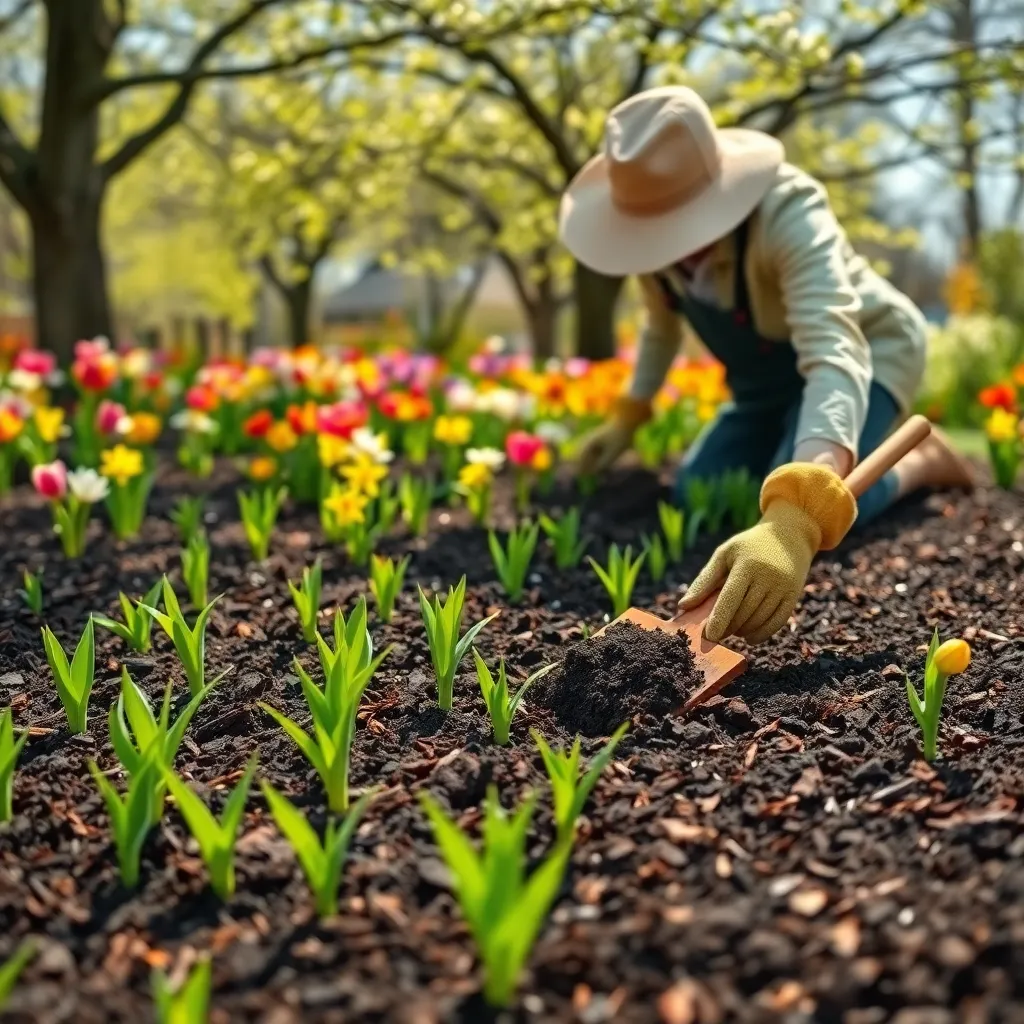
Timing is crucial when it comes to applying mulch effectively in your garden. In spring, mulching helps retain soil moisture as temperatures rise, giving your plants a head start for the growing season.
During the fall, mulching can protect plants from harsh winter conditions. Covering your garden beds with a layer of mulch insulates the soil, keeping it warmer and preventing frost heave, which can damage roots.
In summer, mulch acts as a barrier against extreme heat, reducing the need for frequent watering. By keeping the soil cooler, it allows plant roots to stay healthy and hydrated, which is especially beneficial for drought-sensitive species.
For beginners, a simple organic mulch such as shredded leaves or straw can be applied 2-3 inches thick. Advanced gardeners might experiment with different materials like cocoa hulls or pine bark, which can offer additional benefits like improved soil structure over time.
It’s important to keep mulch a few inches away from the base of plants to prevent rot and pests. This technique also ensures that water and air can reach the roots more effectively, promoting healthier plant growth.
Mulching Techniques for Success
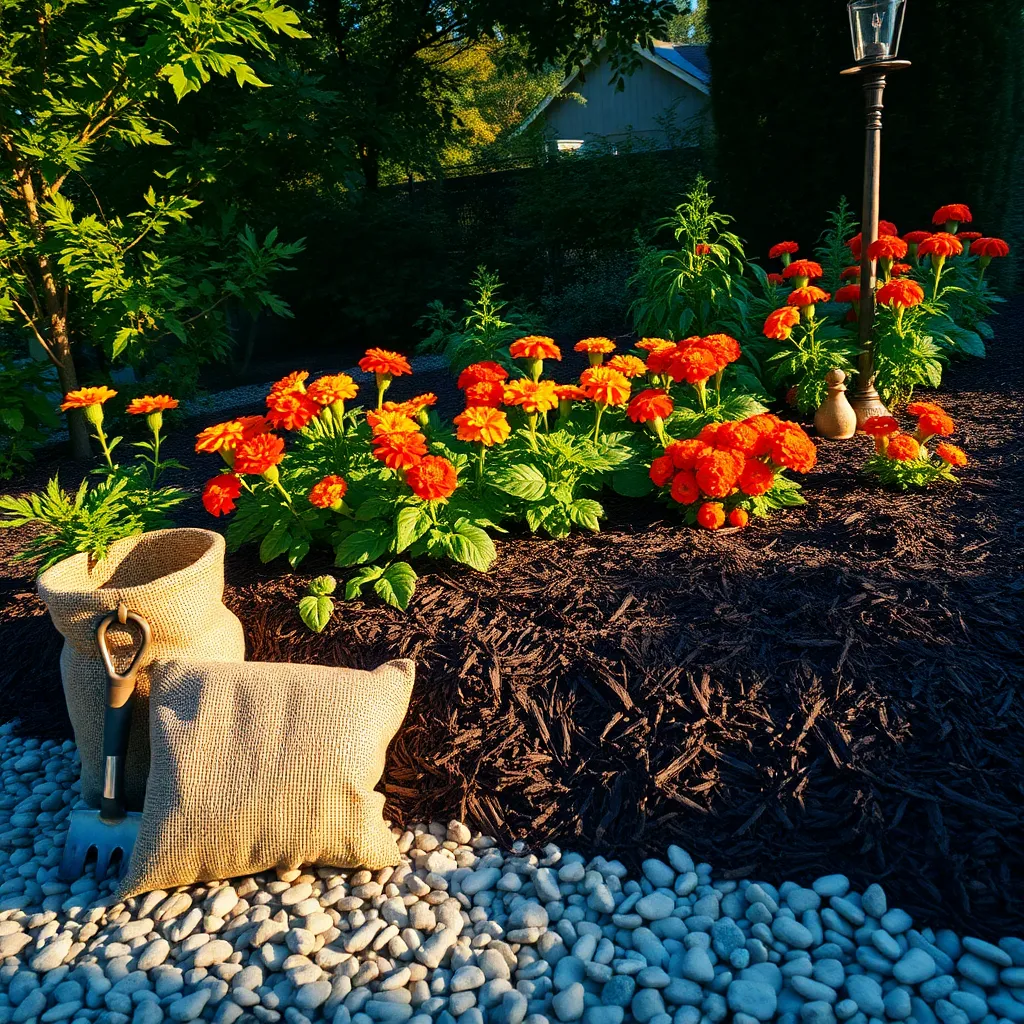
One effective mulching technique is to use organic materials such as straw, wood chips, or shredded leaves, which decompose over time and enrich the soil. This not only improves soil structure but also encourages beneficial microbial activity, making it ideal for both vegetable gardens and flower beds.
For gardeners seeking a more decorative option, consider applying a layer of bark mulch around ornamental plants. Bark mulch retains moisture and provides an attractive finish, while also being effective at suppressing weeds, which is crucial for maintaining a tidy garden appearance.
Avoid piling mulch directly against the stems or trunks of plants, as this can lead to rot and pest problems. Leave a small gap around the base of each plant to ensure proper air circulation and prevent moisture buildup.
While two to three inches of mulch is generally sufficient, heavier clay soils may require a thinner layer to prevent waterlogging. Conversely, for sandy soils that drain quickly, a thicker mulch layer can help retain moisture and promote healthy plant growth.
Advanced gardeners may experiment with different mulch types depending on the plant species and season. For example, using pine needles around acid-loving plants like azaleas and blueberries can help maintain the desired soil acidity.
To maximize the effectiveness of your mulching efforts, apply mulch after watering or rainfall when the soil is already moist. This ensures that the mulch locks in moisture, reducing the need for frequent watering and promoting sustainable gardening practices.
Choosing the Right Mulch Type
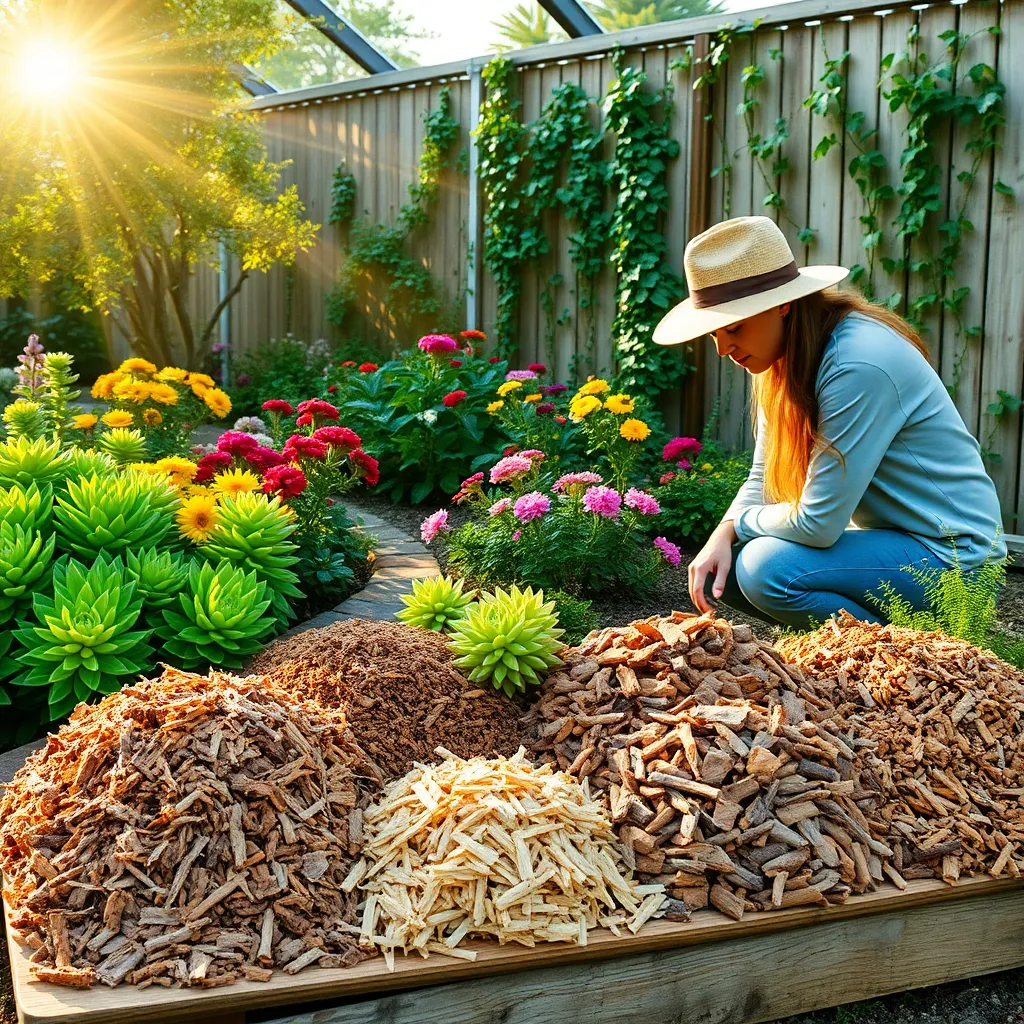
Choosing the right type of mulch can significantly impact your garden’s health and appearance. Mulches serve various purposes, from conserving moisture to suppressing weeds, so selecting the best one for your needs is essential.
Organic mulches, like shredded bark or straw, are excellent for enriching the soil as they decompose. They work well in flower beds and vegetable gardens, providing both nutrients and protection from temperature fluctuations.
For those interested in a low-maintenance option, inorganic mulches such as gravel or landscape fabric are worth considering. These materials are perfect for areas where you want to limit growth, like pathways or around shrubs, as they do not break down over time.
When using organic mulch, aim for a layer about 2-3 inches deep to ensure effective coverage without smothering plants. Make sure to keep the mulch away from the base of plants to prevent rot and allow for proper air circulation.
Avoiding Common Mulching Mistakes
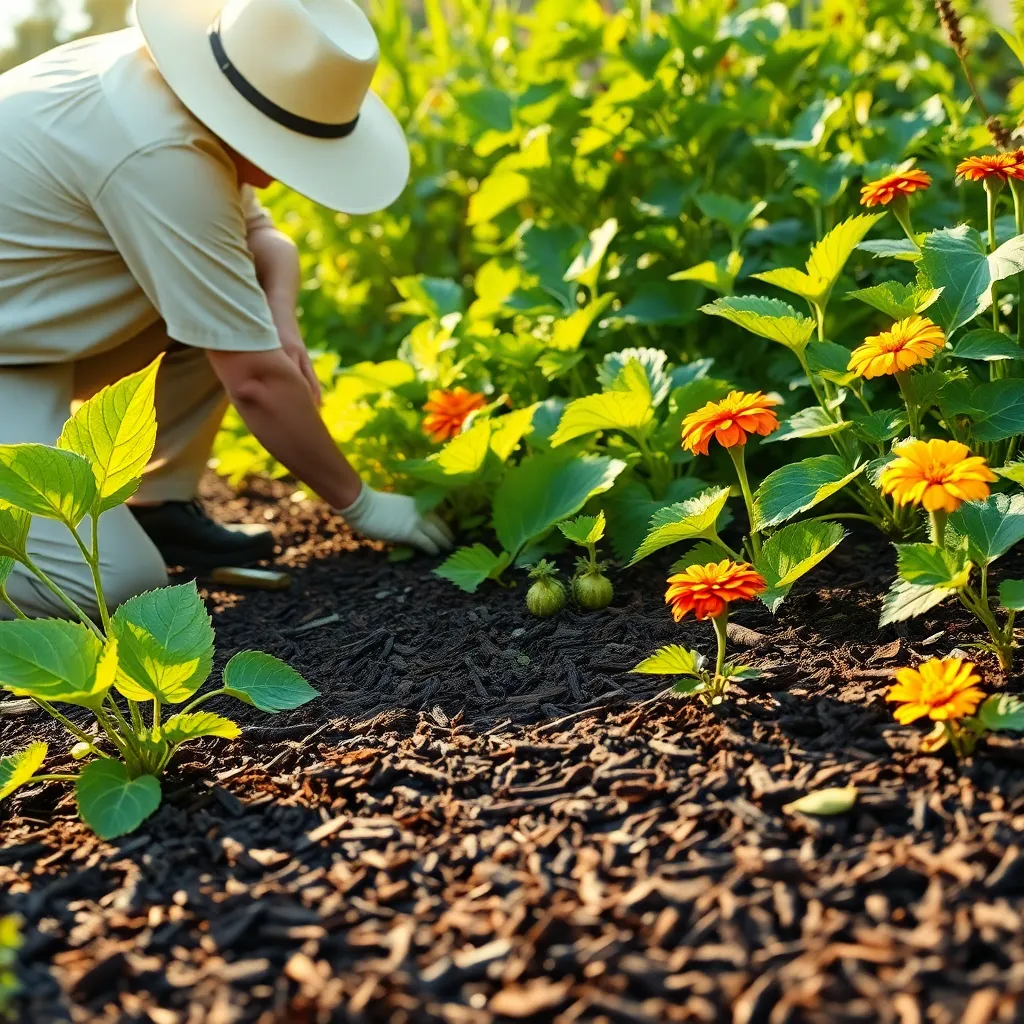
A common mistake when mulching is applying too thick a layer, which can suffocate plants and prevent water from reaching the roots. Aim for a depth of about 2 to 4 inches for most organic mulches, such as wood chips or shredded bark, to allow for proper moisture retention and air circulation.
Another error is placing mulch directly against plant stems or tree trunks, which can lead to rot and pest infestations. It’s crucial to leave a gap of 1 to 2 inches around the base of plants to ensure healthy growth and prevent disease.
Consider the timing of your mulching efforts, as applying mulch too early in the spring can slow soil warming and affect plant growth. Wait until the soil has warmed up, usually by late spring, to ensure that your plants get off to a strong start.
Using the wrong type of mulch for your specific plants can also be detrimental. For example, acid-loving plants like azaleas and blueberries benefit from pine needles or bark mulch, which can help maintain the desired soil pH level.
Regularly checking and refreshing your mulch is another key practice to avoid common pitfalls. Over time, organic mulches break down and may need to be topped up to maintain their effectiveness in weed suppression and moisture retention.
Conclusion: Growing Success with These Plants
In nurturing a thriving relationship, timing is as crucial as selecting the right strategies—just like knowing when to use mulch effectively in a garden. Our journey uncovered five key insights: understanding your partner’s needs, creating a nurturing environment, setting boundaries, allowing space for growth, and regularly tending to the relationship. By integrating these concepts, you can cultivate a relationship that’s both resilient and flourishing.
As an immediate, actionable step, take a moment today to have an open conversation with your partner about their current needs and desires. This practice not only reinforces connection but also sets the stage for ongoing growth and understanding.
To ensure these insights are always within reach, bookmark this article now. Let it serve as a handy reference guide whenever your relationship needs a boost.
Looking ahead, remember that every small effort you make today lays the foundation for a successful relationship tomorrow. With patience and care, your relationship can blossom into a source of joy and strength. Keep tending to it with intention and watch it thrive.


